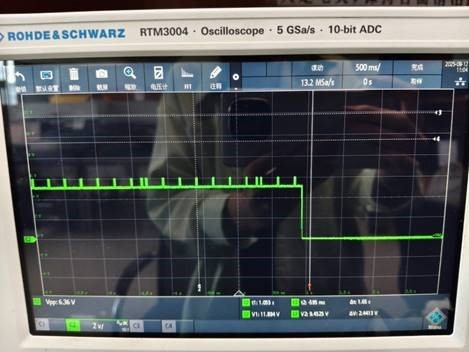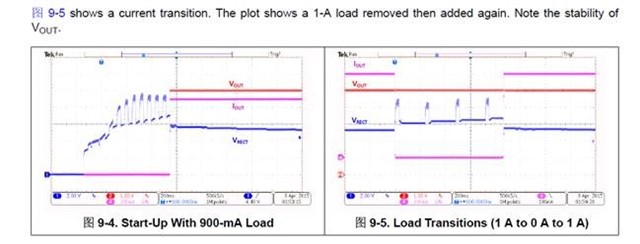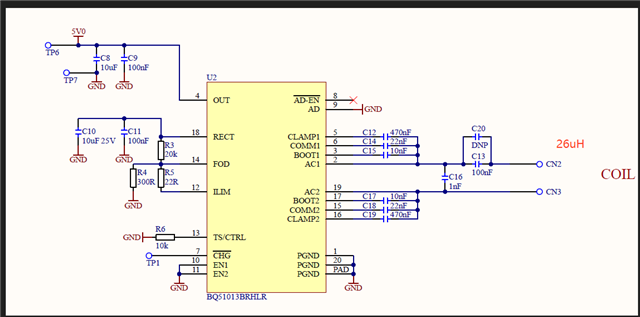Other Parts Discussed in Thread: BQ51013,
Tool/software:
Hi ti team,
Customers encounter a very regular "hissing" sound when using BQ51013 for charging. Could you please advise on how to resolve this issue?
This thread has been locked.
If you have a related question, please click the "Ask a related question" button in the top right corner. The newly created question will be automatically linked to this question.
Hello Switch,
What is the percentage of devices with this behavior? Noise can originate from many different areas, can you identify where on the PCBA the noise is originating from?
Sincerely,
Wyatt Keller
Hi KWyatt,



Hi Switch
Thanks for the additional information.
If the noise is at a 250mS rate it is probably caused by piezoelectric effect on the RECT capacitors.
This can be tested by extending the capacitors from the PCB on very short leads. Also as a test replacing with a tantalum or electrolytic capacitor.
If the capacitors are the problem a couple of options:
1.) Cut a slot under the capacitor
2.) Install same capacitor on both sides of PCB
3.) Some manufactures have low audio noise capacitors.
4.) Change from larger package capacitor to multiple smaller package devices.
Hi Switch
Some other things to check:
1.) Can you send a schematic for review?
2.) Check the COMM1 and COMM2 capacitors also.
3.) What type of capacitor is used for series resonant capacitors, between the coil and IC?
Hi Bill,


Hi Switch
This case also has abnormal pulses and noise in RECT. One of the replies points out: It seems that the communication data packets between TX and RX are corrupted.
Is there any way to verify the communication data packets?
The indications of communications issues would be the output dropping to 0V followed by a restart. The drop out to restart is about 40mS.
The oscilloscope captured the voltage waveform of RCET during charging (with a load of 500mA/5V), showing periodic pulses. The frequency of these pulses is the same as that of the heard noise.
Looking at the above scope capture unit is operating for over 4 seconds then turns off with no restart. Does not look like a communications issue.
The resonant capacitor uses X7R, and I also tried replacing it with NP0, but there was no improvement.
Recommend using COG / NPO capacitor for resonant capacitor to reduce loss. Also splitting into two devices to further reducing loss.
The schematic diagram is as follows. For the capacitors of COMM1/COMM2, I once changed them from 22nF to 47nF, and the pulse amplitude became larger. The resonant capacitor uses X7R, and I also tried replacing it with NP0, but there was no improvement.
This sounds correct, larger value capacitors will increase the shift in resonate freq.
The standard value of 22nF is good but smaller value COMM capacitor may work also. COMM value is about 10% of the resonant capacitor, in this application about 10 to 15nF would probably work also.
Another capacitor to check is C8 on the output, suspect the output may have some ripple on it also.